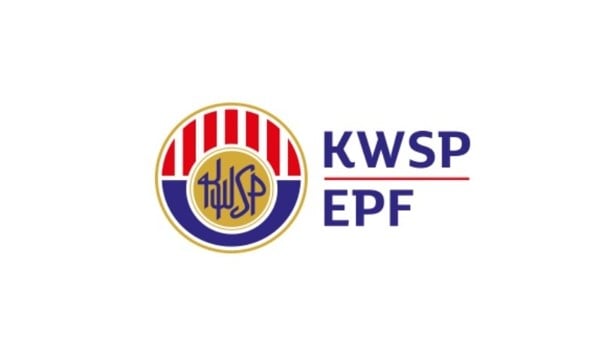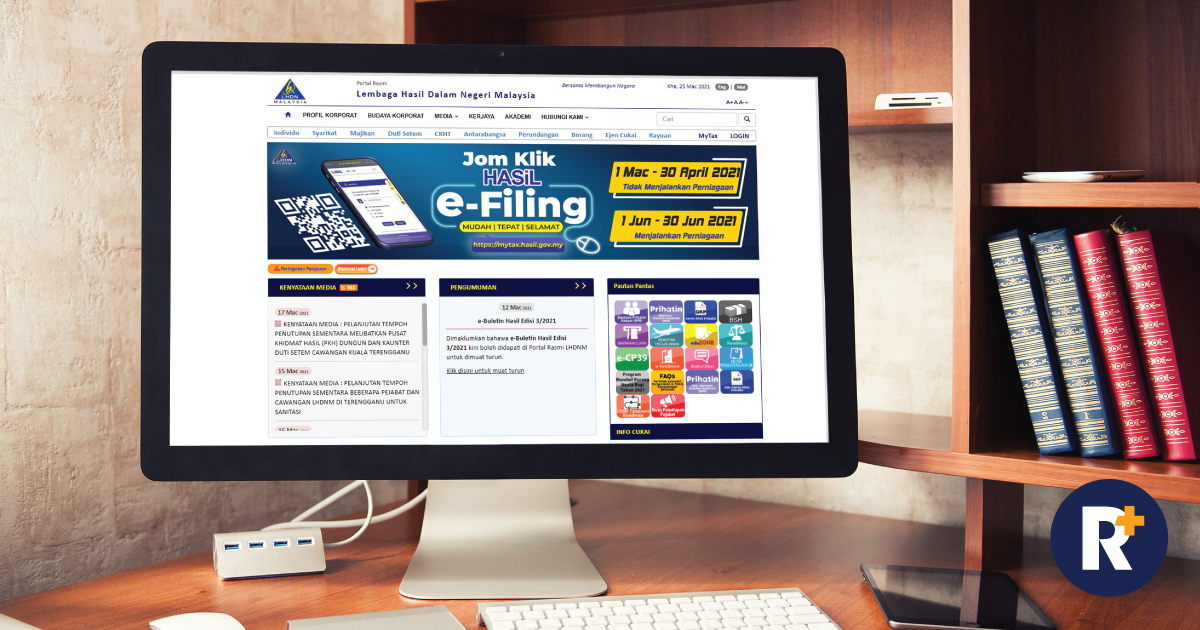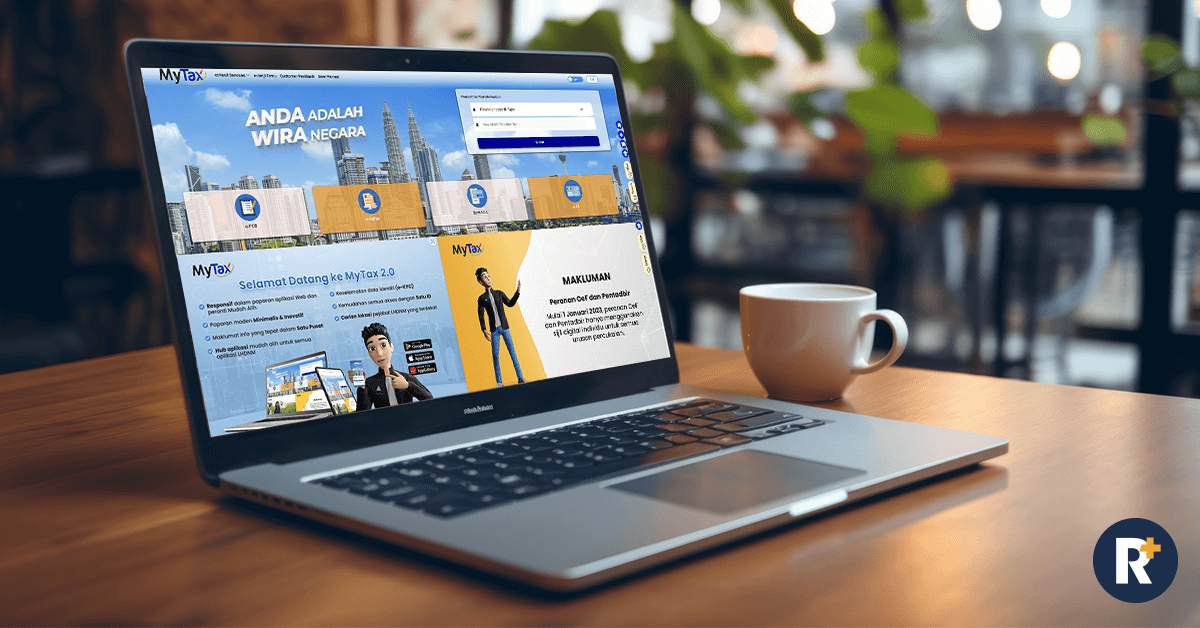ringgitplus
18th March 2024 - 8 min read

The freelance market in Malaysia has seen substantial growth over the past years, with many relying on technology and the boom of social media to help them earn income. Covid-19, too, has accelerated its growth as people sought out ways to cope with the salary cuts and retrenchment brought on by the pandemic.
In fact, the government has also shown its support for the gig economy by introducing incentives via various stimulus packages – such as the PENJANA economic recovery plan – and through collaborations with selected entities. It has even recently established the Gig Workers Commission to ensure that workers in this sector receive protection and enjoy the same benefits as formal workers as defined in the labour laws of Malaysia.
If you’ve been working as a freelancer over the past year – whether full-time or part-time – you may have some concerns about filing your taxes now that the tax season is here. For instance, do you need to file your taxes since you’re not “officially” employed by an employer? If yes, how different will the process be? What form should you use? Here’s a quick guide to help you through the process!
What is defined as a freelance work?

To begin, the World Bank defines self-employed individuals as someone whose income depends directly on the profits derived – which accurately describes freelancers and gig workers as well. This definition is also reflected in several government initiatives, where this group is accorded similar benefits as self-employed individuals (such as the Self-Employment Social Security Scheme). It includes gig economy workers, such as e-hailing drivers, delivery riders, and sellers on e-commerce platforms.
Do you need to file taxes as a freelancer?
Yes. All individuals are required to file their taxes if they already have a registered tax file, or if their annual income exceeds RM34,000 after deducting their EPF contributions. This is regardless of the source of their income. In other words, it does not matter whether you are employed by a company or freelancing; as long as you have reached the specified income threshold that can be taxed, then it is necessary for you to file your taxes.
Is the tax filing process different for an employed individual and a freelancer?

Overall, the tax filing process will not be tremendously different between an employed individual and freelancers. There are, however, certain extra steps that freelancers will need to take as they will be affected by the following:
EA Form
The EA form is document that is provided by employers to their employees, summarising details such as their annual earnings, as well as EPF and SOCSO contributions for the year. This document is immensely useful in the filing of your taxes as everything is already properly calculated on your behalf; all that remains is for you to key in the right number in the right place within the income tax form.
Meanwhile, freelancers will need to go through the extra step of tabulating their own profits by checking their invoices and expenses. This process can be pretty tedious, especially if you’ve been busy throughout the year, so it would be good idea for you to do your bookkeeping accurately as you conduct your business.
Monthly Tax Deduction (MTD)
Aside from that, the Monthly Tax Deduction (MTD, also known as PCB) programme also makes for a slightly different filing process between an employed individual and a freelancer. As an employee, you’ll notice that your employer will allocate a portion of your salary each month for this purpose.
Essentially, MTD payments are monthly deductions that serve as advanced tax payments. Introduced in 1995, it allows you to spread the financial heft of paying your annual tax across 12 months so that you do not need to struggle with a lump-sum tax payment at the end of the year. With the MTD in place, you will only need to pay a small amount (if your MTD amount is not enough to cover your actual tax amount), or may even receive a refund if you’ve overpaid for the year.
Freelancers, on the other hand, are not enrolled in the MTD programme. As such, they will need to pay the full sum at the end of every year, which can be quite a hefty amount, so be sure to allocate some money for this purpose throughout the year!
Which form should I use as a freelancer?

Depending on whether you’ve registered your freelance work as a business or not, you may be required to use different forms to file your taxes. If you’ve not registered your freelance work as a business, then you will still be using the BE form – which is intended for individuals who do not own a business. On the other hand, if you have registered your work as a business, then the right form to use is the B form instead.
How to fill in the form for part-time and full-time freelancers?
Assuming that you are using the BE form for your tax filing, part-time freelancers (defined as those who are still employed but are doing freelancing jobs on the side) and full-time freelancers will encounter a slight difference in the way you declare your income. For part-time freelancers, you will need to fill in the income that you earn from your day job under “Statutory income from employment”, and the income from your freelance work under “Statutory income from interest, discounts, royalties, pensions, annuities, other periodical payments, and other gains and profits.”

Meanwhile, full-time freelancers will log all their earnings under “Statutory income from interest, discounts, royalties, pensions, annuities, other periodical payments, and other gains and profits.”

Are there tax exemptions, deductions, or reliefs that you are entitled to as a freelancer?
Most of the earnings from your freelancing jobs will be taxable. However, there are some exemptions that you can tap into, including specific types of royalties:
- Exemption of up to RM10,000 for publication of artistic works, recording discs, or tapes
- Exemption of up to RM12,000 for the translation of books and literary works
- Exemption of up to RM20,000 for the publication of literary works, original paintings, or musical compositions
- 50% exemption of statutory income derived from research findings that have been commercialised
These are on top of other tax exemptions and tax incentives that you can tap into for your tax filing this year (YA2023).
Full-time freelancers can also consider tapping into the Self-Employment Social Security Scheme (SESSS) and the EPF Voluntary Contribution (i-Saraan) programme to reduce the amount of taxable income. Essentially, the SESSS and i-Saraan contributions are the equivalent of the Social Security Organisation (SOCSO) and Employees Provident Fund (EPF) contributions, but for self-employed individuals (including freelancers).
What about freelancing income from abroad?

Back in 2005 (YA 2004), the government had said that income earned from companies that are not based or registered in Malaysia is not subject to Malaysian income tax. Under Budget 2022, however, former Finance Minister Tengku Datuk Seri Zafrul Abdul Aziz had proposed to begin taxing foreign-sourced income received in Malaysia. Following that, the government decided to continue exempting certain foreign-sourced income for certain categories of tax residents (under certain conditions) for another 5 years until December 2026; individuals who receive income from partnership businesses outside of Malaysia, for instance, are excluded from this exemption.
Essentially, all this means that if you’ve been taking jobs from foreign companies, these earnings can be exempted, provided that you have paid tax in the country of origin (where the company is located). Be sure to keep proof that your income is attributed directly to business operations that are conducted outside of Malaysia, such as invoices and receipts. If you are unable to do so, your income will be deemed as Malaysian-derived income.
Make sure to also always check the taxation guidelines on e-commerce that is provided by the Inland Revenue Board (LHDN) to ensure that you are up to date with the latest standards adopted.
Registering as a business for more tax incentives
It may be a good idea to register your freelance work as a business with Suruhanjaya Syarikat Malaysia (SSM) – even if you are only freelancing as a side gig. This is because it opens up a number of tax deductions allocated specifically for businesses. For instance, you may be able to claim certain expenses as business operating costs – which you cannot do as a non-business taxpayer. To illustrate, freelance videographers can list the purchase of their camera gears and editing software as business cost.
If you’re interested, you can register as a sole proprietor business under a personal or trade name for your freelance work, between a period of one five years. Depending on whether you opt for a personal name or a trade name, the fee will come up to RM30 or RM60 (new registrations).
***

With this, we hope that freelancers will have a better idea as to how to file their taxes for the year. In some situations, though, it might be a good idea for you to hire a professional tax consultant for assistance – such as when you’ve earned a substantial income that could make the filing process complicated. They can also share pointers on how to prepare your taxes for your future reference.
If you need further step-by-step guidance on how to fill in your income tax form, do also check out our income tax guide for 2024 (YA2023) here. Alternatively, you can refer to our income tax content for other tax-related information, such as the new MyTax portal and how to file your taxes for the first time.









Comments (14)
If my income is categorized as freelancing income from abroad, do I still need to do e-filing by filling up form BE? If yes, which field should I input my income? I’m hoping to go through this process so that I can get a document to apply for credit card..
I think they already answer here. Note that under Budget 2022, the government had proposed to remove this tax exemption for foreign-sourced income, but the decision was subsequently reversed. With this, affected individuals can continue to enjoy the exemption from 1 January 2022 to 31 December 2026. This is with the exception of those who carry out partnership businesses in Malaysia; they will be subject to tax for any foreign-sourced income received in Malaysia effective from 1 January 2022.
which mean freelancing income from abroad no need to filling Up form BE even convert to MYR is 200k?
Hi I’m interested to know what does it mean by freelancing income from abroad , does that mean that we get paid in a different currency like google ad sense or such?
Hi, i will soon convert my position in the company to “sub-con” or “free-lancer” due to age and slowly stepping down before retirement at 60. I am 58 this year. The company propose no EPF to be given to me, but i still liable to file my tax every year since i started not to punch in 9-5 in office as daily worker. Pls adv are they going to issue me EA form every year, and pls adv the possible PCB rate which they will deduct from my so called monthly “sub-con” fee (in fact is monthly income). What is… Read more »
Your best option would be to clear this matter with your employer (especially regarding PCB and EA. You should also consider engaging a tax consultant who would be able to assist you and offer expert advice tailored to your situation.
I’m rather new to tax filing and sole proprietorship,
wanted to ask if I worked my day job from Jan – Jun, then quit and started a sole proprietorship July – dec.
Would I need to fill in both BE(for day job) and B(for sole proprietorship)?
How would I fill in during the transition
Yes, you need to fill out both BE (for employment income) and B (for sole proprietorship income). During the transition, report your employment income under BE and sole proprietorship income under B. Contact LHDN for more information.
My question:- A retiree ( with no job & income) has been helping his friend as a freelance casual worker and have been paid RM2150 only for year 2023 via cheques and online payment. Does the retiree need to declare this RM2150 as income in his efiling? Tq
thank you very much. this is a very helpful article. Regards
i have a full time job and i work as part time property agent as well, my part time income will put under “Statutory income from interest, discounts, royalties, pensions, annuities, other periodical payments, and other gains and profits.”
what is the number of employment i need to fill in? is it 1 or 2?
Thanks
You should fill in “1” for the number of employments, as your part-time work as a property agent doesn’t constitute separate employment but is considered additional income.
I’m working full time permanent as salary earner for a company. At the same time, i also have side income as freelancer and getting monthly allowance from my small business (partnership) registered with SSM. How should I file my tax filing? Should I use BE form or B Form?
Considering your employment and additional income sources, you may need to use both the BE and B forms for tax filing. I recommend seeking advice from a tax professional for more guidance.